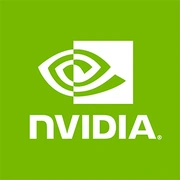NVIDIA GeForce RTX 2080 Max Q

NVIDIA GeForce RTX 2080 Max Q in 2025: Everything You Need to Know
Professional Review of the Graphics Card for Gamers and Creators
1. Architecture and Key Features: Turing and Innovations
The NVIDIA GeForce RTX 2080 Max Q is built on the Turing architecture, released in 2018, but remains relevant due to its support for modern technologies. Chips are manufactured using TSMC's 12nm process, providing a balance between performance and energy efficiency.
Key Features:
- RTX (Real-Time Ray Tracing): The first generation of real-time ray tracing. By 2025, many games are adapted to this technology, but comfortable gameplay at 4K requires DLSS.
- DLSS 1.0: AI-enhanced image upscaling with lower resource consumption. Modern games supporting DLSS 3.0 and higher are backward compatible, but efficiency is lower.
- FidelityFX Super Resolution (FSR): An AMD technology that is supported in a hybrid mode on NVIDIA cards through drivers.
Why is Turing still relevant?
Despite the emergence of Ampere and Blackwell architectures, Turing remains popular for mid-range laptops due to its optimized power consumption and affordable price.
2. Memory: GDDR6 and Its Role
The RTX 2080 Max Q is equipped with 8GB of GDDR6 memory on a 256-bit bus. It achieves a bandwidth of 384 GB/s, which is sufficient for most games and creative tasks in 2025.
Impact on Performance:
- In games with high-detail textures (e.g., Cyberpunk 2077: Phantom Liberty), memory rarely becomes a bottleneck even at ultra settings in 1440p.
- For 3D rendering in Blender or Unreal Engine 5, 8GB is the minimum comfortable level, but complex scenes may require optimization.
3. Gaming Performance: From 1080p to 4K
Average FPS in Popular Games (Ultra settings, no ray tracing):
- Cyberpunk 2077: 1080p — 75 FPS, 1440p — 55 FPS, 4K — 32 FPS (with DLSS — up to 45 FPS in 4K).
- Apex Legends: 1080p — 144 FPS, 1440p — 110 FPS.
- Hogwarts Legacy: 1440p — 48 FPS (with RTX Medium + DLSS — 60 FPS).
Ray Tracing:
Enabling RTX reduces FPS by 30-40%, but DLSS compensates for the losses. For instance, in Control with RTX High and DLSS, the card delivers stable 60 FPS in 1440p.
Recommendations:
- Ideal for 1080p/1440p gaming.
- 4K is only feasible with DLSS or lowered settings.
4. Professional Tasks: Not Just Gaming
CUDA Cores (2944 units) accelerate rendering and computations:
- Video Editing: In Adobe Premiere Pro, rendering a 4K video takes 20% less time compared to the GTX 1080.
- 3D Modeling: In Blender, a BMW scene renders in 4.2 minutes compared to 6.5 minutes on the RTX 2060.
- Machine Learning: Supports TensorFlow and PyTorch, but for larger models, it's better to use cards with more VRAM.
Tip: For working with 8K materials or neural networks, consider the RTX 3080/4080, but for basic tasks, the RTX 2080 Max Q is sufficient.
5. Power Consumption and Heat Dissipation
TDP: 80-90 W — typical for Max Q mobile solutions.
Cooling Recommendations:
- Laptops with this card require a cooling system with 2-3 heat pipes and fans ≥ 45 dB.
- Use cooling pads for extended gaming sessions.
Chassis: Avoid ultra-thin laptops — they are more prone to throttling. Optimal models are around 18 mm thick (e.g., MSI GS65 Stealth).
6. Comparison with Competitors
AMD Radeon RX 6700M (2023):
- Stronger at 1080p (+15% FPS), but weaker in ray tracing tasks.
- Price: $700-900 for new models.
NVIDIA RTX 3060 Mobile (2021):
- Comparable in performance, but the RTX 2080 Max Q has more VRAM (8 GB vs 6 GB).
- Price: $600-750.
Conclusion: The RTX 2080 Max Q excels over competitors from 2021-2023 in price balance and RTX support, but falls behind the new RTX 4050/4060 Mobile in energy efficiency.
7. Practical Tips
Power Supply: Laptops with the RTX 2080 Max Q require a 180-230 W adapter. Check compatibility before purchase.
Compatibility:
- Supports PCIe 3.0 x16.
- Optimal platform: Intel Core i7-10xxx or AMD Ryzen 7 4800H and newer processors.
Drivers:
- Regularly update through GeForce Experience.
- For professional applications, use Studio Drivers.
8. Pros and Cons
Pros:
- Support for RTX and DLSS.
- Energy efficiency for mobile devices.
- Affordable price ($600-800 for new laptops in 2025).
Cons:
- Limited performance at 4K.
- Lack of hardware support for AV1.
9. Final Conclusion: Who Is the RTX 2080 Max Q For?
This graphics card is the optimal choice for:
- Gamers who value mobility and play at 1440p.
- Creators working with basic-level video editing and 3D tasks.
- Students looking for a balance between price and capabilities.
Alternatives: If your budget allows, consider the RTX 4060 Mobile. However, for those looking to save without losing key features, the RTX 2080 Max Q remains a reliable option even in 2025.
Updated in April 2025. Prices are current at the time of publication.
Basic
Memory Specifications
Theoretical Performance
Miscellaneous
Benchmarks
Compared to Other GPU
Share in social media
Or Link To Us
<a href="https://cputronic.com/index.php/gpu/nvidia-geforce-rtx-2080-max-q" target="_blank">NVIDIA GeForce RTX 2080 Max Q</a>